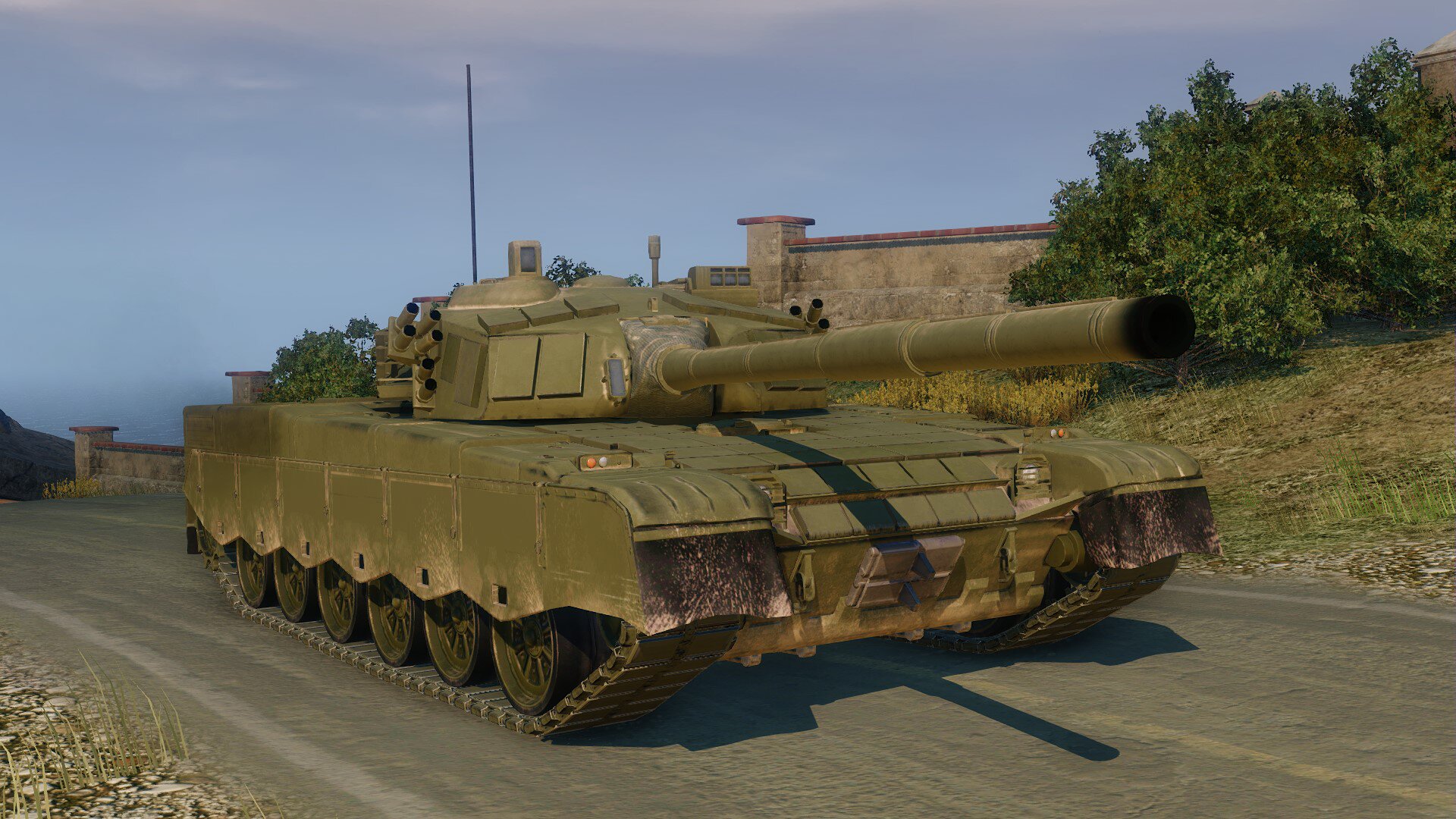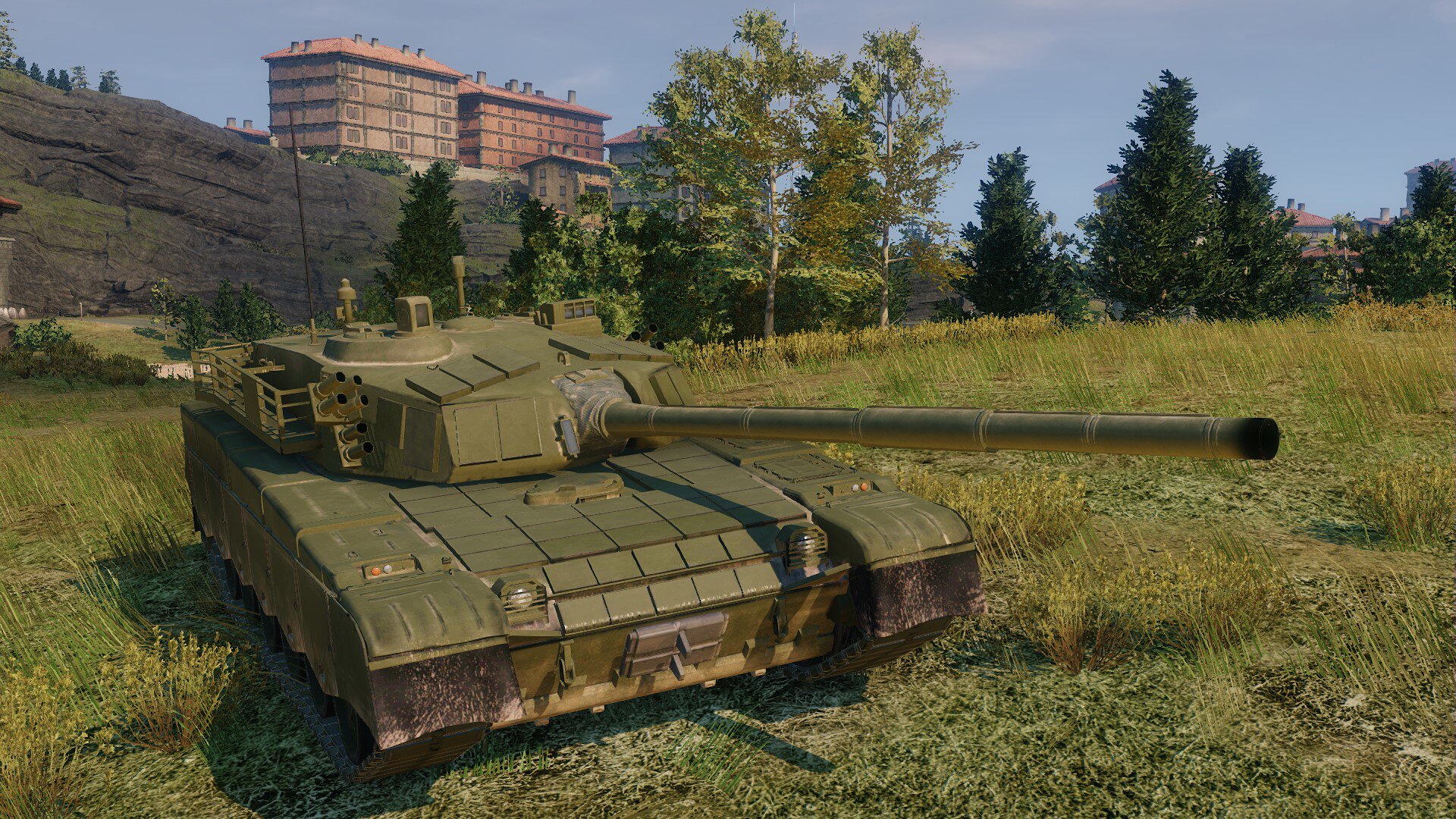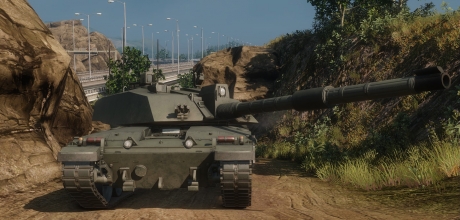
The Type 90-II Chinese Main Battle Tank prototype is a rather interesting piece of Chinese machinery, built, unlike many of the previous Chinese vehicles, from scratch instead of by upgrading some older, obsolete design.

But, as is common for the Chinese tanks of the 1970s and 1980s, its development is somewhat shrouded in mystery and confusing reports appear on numerous Chinese and western websites and in other publications.
For one, the Type 90 MBT was not an evolution of the Type 85, although it used the same weapon system. It was basically a new attempt for a third generation tank based on the lessons learned from a T-72 that the Chinese had acquired earlier in the 1980s from Romania. While the whole vehicle had the typical Chinese shapes of the late 1980s and 1990s, when China moved away from the classic Type 59-style cast turret and replaced it with a new welded one, the suspension is different from that of the Type 85 series and can be traced back to the abovementioned T-72.
Secondly, the Type 90 was built for export – specifically, the export to Pakistan. Its internal name was BW123 – the BW part signified specifically an export vehicle (WZ was used for domestic ones). In other words, it was not designed as a third generation MBT for Chinese use, that role eventually fell to Type 96 and Type 99 MBTs.
By the time a prototype called Type 90-II was introduced in 1991, Pakistan had already ordered around 200 Chinese Type 85-IIAP tanks but there was always room for a better deal and a lot of the Pakistani experience went into the design of the original Type 90-II.
The Type 90-II prototype, developed by NORINCO, weighed 48 tons and had a crew of three. It was basically a mashup of older Chinese technologies from Type 80 and Type 85 MBTs and Soviet upgrades.

It was armed with a copy of the Soviet 125mm 2A46 smoothbore called Type 83 with a carousel autoloading mechanism reverse-engineered from the Romanian T-72 that had roughly the same performance as its Soviet counterpart. The rate of fire was between 6 and 8 rounds per minute and the gun could fire the same type of ammunition as the Soviet one with APFSDS, HEAT and HE rounds being the standard loadout. The vehicle carried 39 rounds.
Some sources claim that the vehicle could also fire gun-launched guided missiles, specifically a copy of the Soviet 9K119 Refleks system. It’s possible, but, given the fact that:
- The installation of such system onto a tank is not a matter of just bolting it together and ramming a guided missile shell into the gun barrel
- The vehicle was, instead, equipped with a fire control system comparable to the Type 85-IIM with a laser rangefinder and a two-axis stabilizer, which did not feature the missile firing capability
That’s likely not the case.
The base armor of the vehicle was from steel but layers of composite were added to the turret and hull front. The exact protection levels are not known but are assumed to be roughly the same as a base T-72 model. Somewhere along the line, an explosive reactive armor kit came along, but it was not present on the base Type 90-II model.
The engine choice was somewhat unique. Instead of powering their new creation with a standard Chinese engine of the era, the Chinese offered a wide scale of imported engines and transmissions for the vehicle with the baseline being the Ukrainian 6TD diesel from Kharkov producing some 1200hp. This made the vehicle quite fast; its maximum speed was 62 km/h, not a bad value for its 48 tons.

Other engines have been tested as well, however, including:
- British Perkins Condor CV12 engine from the Challenger MBT (also producing 1200hp)
- German MTU diesel engine (allegedly)
- French 1500 diesel engine (allegedly)
Here’s where things get really hazy. The Pakistanis apparently didn’t like first prototype all too much. Some sources claim an improved version called the Type-90-IIA with French engine didn’t go through either due to the French embargo on Pakistan following the 1998 nuclear tests.
The Pakistanis, at this point, also became more involved in the vehicle development, which eventually led to an improved version called Type 90-IIM, more commonly known under the name MBT-2000, that Pakistan purchased and mass-produced from 2001 under the name of Al-Khalid, but that was a different vehicle from the early Type 90-II prototype and would likely deserve a slot of its own in the game.
The Type 90-II therefore became an origin point of a whole line of export MBTs from the 1990s and 2000s, including:
- MBT-2000 (Al Khalid)
- VT-1A
While several hundred VT-1As and MBT-2000s were produced, the Type 90-II itself remained a prototype vehicle only.

In Armored Warfare, the Type 90-II is a Tier 6 Main Battle Tank of the Zhang-Feng branch. Unlike its predecessors, it can fire guided missiles and does have an ERA kit available for additional protection. It also features both the experimental diesel engines (the British Condor and the Ukrainian 6TD).
Gameplay-wise, mid-Tier Chinese vehicles behave like Russian tanks, but with more focus on single shot damage at the expense of mobility. These tanks are generally sluggish and not well-protected, but pack quite a punch. The Type 90-II is no exception, sticking to the standard early Chinese MBT gameplay.
We hope you like it and will see you on the battlefield!








